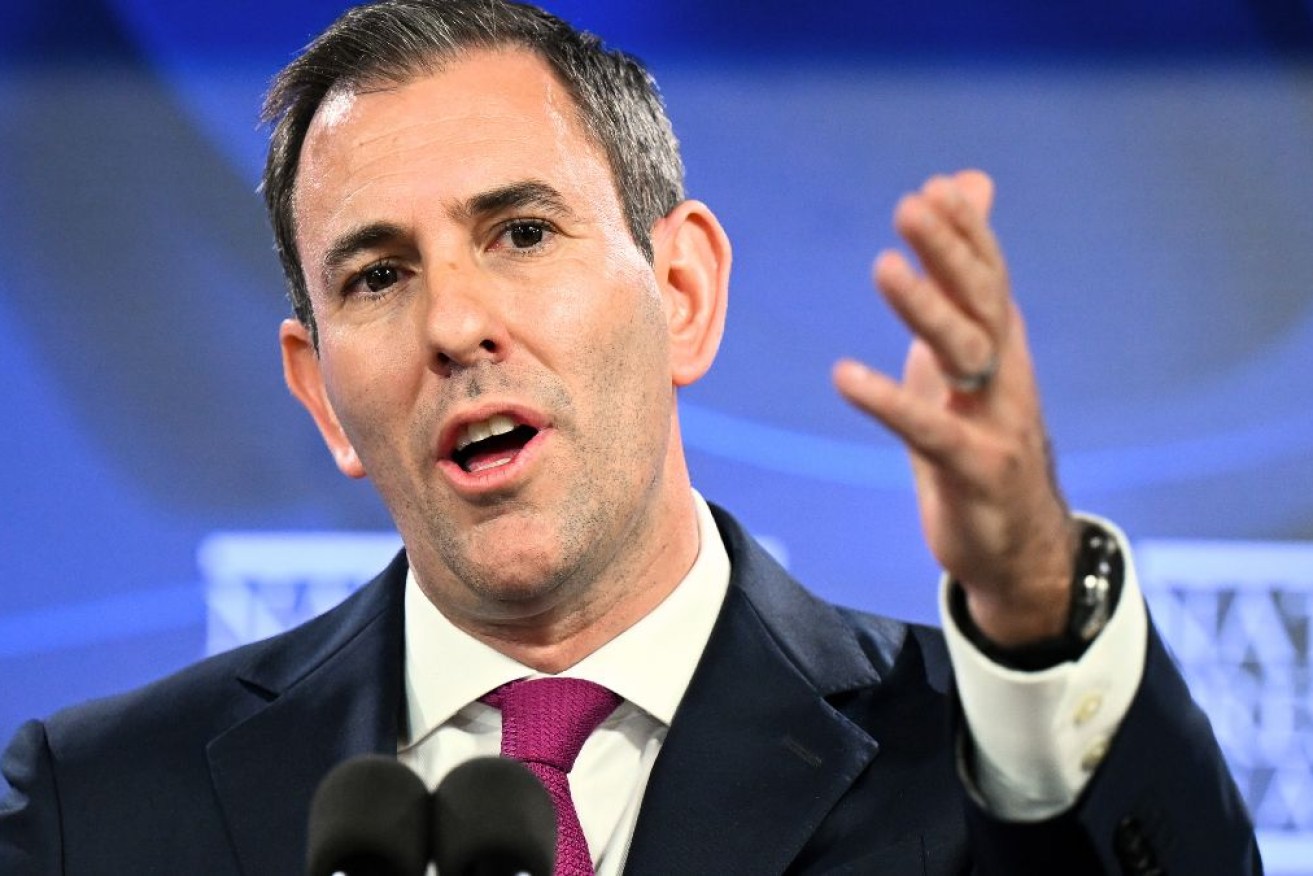‘Rock and a hard place’: Tough truths behind first federal government surplus since 2008


Treasurer Jim Chalmers says consumers are paying too much because merger laws are too lax. Photo: AAP
The Albanese government has unveiled Australia’s first budget surplus in 15 years on the back of sky high commodity prices and a decision to book an improving bottom line rather than spend it.
But the victory in Canberra is cold comfort for Australians doing it tough, particularly those languishing on income support payments set below the poverty line amid the cost-of-living-crisis.
It exposes the grim trade-off faced by Treasurer Jim Chalmers, who on Friday defended his “carefully calibrated” relief for households as responsible in the face of historically high inflation.
“The budget is in much better nick, and it helps us to invest in a more resilient economy, and it helps us to roll out this cost of living help that people do desperately need,” Dr Chalmers said.
The Treasurer was keen to spruik a range of government policies on his Friday morning television rounds, including investments in cheaper medicines and early childhood education.
But news of the surplus comes despite warnings that Australia’s social safety net is still condemning some of the nation’s lowest-income households to poverty, even after a meagre lift in the JobSeeker rate came into effect earlier this week.
Economist Nicki Hutley said it’s “pretty shocking” that JobSeeker remains so low, but that Dr Chalmers has been faced with balancing several difficult economic challenges this year.
“They’re between a rock and a hard place,” Ms Hutley said.
“If they don’t bank the surplus they’re accused of undermining monetary policy, but when they do bank it they’re accused of not doing enough to help people in need.”
First surplus in 15 years unpacked
The 2022-23 Final Budget Outcome was published on Friday, showing the underlying cash balance of the Commonwealth was $22.1 billion – a significant improvement on the $77.9 billion deficit last year.
Economist Chris Richardson said the improvement in the budget has been “huge”, but is in part underpinned by the last budget’s gloomy forecasts about the impacts of “inflation and war” proving to be overestimates.
He pointed out that a $157 billion improvement in projected deficits over the four years to 2025-26 is “more than explained” by earlier Treasury forecasts that tax revenue would take a $273 billion hit from those anticipated economic headwinds.
“The budget got better mostly because it was never as bad as Treasury projected it to be,” Mr Richardson said.
Mr Richardson went onto say that there remain big question marks over the long term health of the budget, suggesting Treasury has made “courageous” forecasts for the decades to come.
“Despite submarine costs, the defence budget only increases to 2.3 per cent of GDP from today’s 2 per cent,” he said.
“There’s a plan to have a plan to cut NDIS costs. However, given that this will be the largest-ever cut to any government program in Australia – ever – the relative lack of detail to date may not inspire much confidence among either the nation’s disabled or its taxpayers.”
Australians on JobSeeker still struggling
Meanwhile, many Australians are still dealing with the fallout of government fiscal restraint today, as social services advocates continue to warn about the welfare of income support recipients amid the skyrocketing cost of essentials.
Figures published by the Australian Council of Social Services earlier this month showed many Australians will continue to be forced into skipping meals and going without medicines even after a lift to JobSeeker rates.
Separate research from Australia National University (ANU) has found hundreds of thousands of Australians could be lifted out of poverty with additional government spending on the social safety net.
ANU found $4 billion in extra spending would lift an estimated 193,000 more people out of poverty.
In order to pay for a bigger social safety net, ANU modelled explored scenarios where capital gains tax discounts and superannuation tax concessions are pared back.








